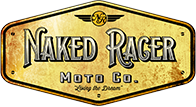ARIEL Motorcycles
Founded in the early 20th century, Ariel Motorcycles carved out a legacy of innovation, performance, and timeless design in the British motorcycling world. Although Ariel’s origins date back to 1898 with the production of De Dion-engined three-wheelers in Birmingham, it officially began manufacturing motorcycles in 1902, using 3.5hp single-cylinder White & Poppe engines. These early machines laid the foundation for what would become one of the most iconic names in British motorcycling history.
Innovative Engineering from the Start
By the time World War I broke out in 1914, Ariel’s lineup featured 498cc side-valve (sv) singles and powerful 998cc inlet-over-exhaust (ioe) V-twins. The company also produced a range of V-twins from 348cc to 794cc, reflecting its commitment to power and versatility. Post-war, Ariel pushed further into innovation with the launch of new models like the 586cc and 664cc singles in the early 1920s and a formidable MAG-powered 992cc V-twin.
These machines were not only advanced but also competitively priced, with a 499cc sv single costing just £95 and the high-performance 992cc V-twin with sidecar priced at £160.
The Sangster Era and Turner’s Rise
The mid-1920s marked a turning point for Ariel. Under the ownership of Jack Sangster, the company welcomed a young and talented engineer, Edward Turner, and chief designer Val Page. Their collaboration birthed a series of popular and high-performing motorcycles. Turner’s designs, including the iconic 498cc overhead valve (ohv) and 557cc side-valve singles, became bestsellers. Page’s work led to the introduction of models like the 248cc and 348cc Red Hunters, which quickly gained a loyal following.
In 1931, Turner introduced the revolutionary 498cc Square Four, a unique four-cylinder engine with its cylinders set in a square configuration. This model would evolve through the 1930s into 596cc and 996cc versions, solidifying Ariel’s place as a leader in innovative motorcycle engineering.
Ariel During and After the War
During World War II, Ariel supplied many 347cc ohv machines to the military. After the war, the company resumed civilian production, focusing on the Red Hunter series (347cc and 497cc singles), the vertical twin 498cc oh, and the 997cc Square Four. These machines appealed to both casual riders and performance enthusiasts.
One of the more affordable post-war options was the 197cc Colt, a single-cylinder ohv model priced at £134, making Ariel motorcycles accessible to a broader market.
Mergers, Decline, and the Final Years
By the early 1950s, Ariel had become part of the BSA Group, and many Ariel and BSA components became interchangeable. Edward Turner returned to influence Ariel once more and introduced models like the 49cc Pixie, though it failed to capture the market’s interest.
However, Ariel’s fortune revived briefly with the success of the Leader and Arrow models. These 247cc two-stroke vertical twins, designed again by Val Page, were praised for their performance and sleek styling. A 197cc version followed, marking the final chapter in Ariel’s motorcycle production.
End of the Road
By 1970, Ariel’s name disappeared from the motorcycle market. Yet, the brand’s spirit endures in the hearts of enthusiasts and collectors. From thrilling trials competitions to the mechanical genius of the Square Four, Ariel Motorcycles left behind a rich heritage that defined an era of British motorcycling. Names like Harold Perrey, Sammy Miller, and Ted Ray remind us of the company’s racing pedigree and the passion that powered its machines for nearly 70 years.






No comment